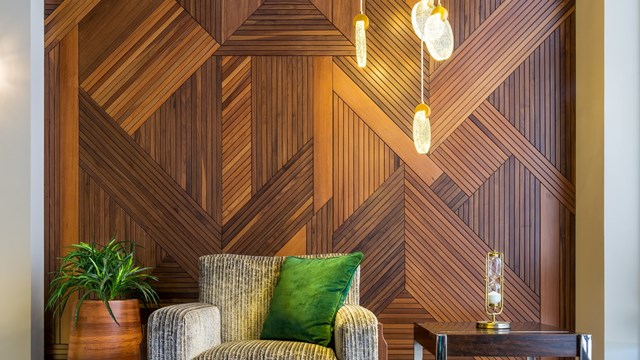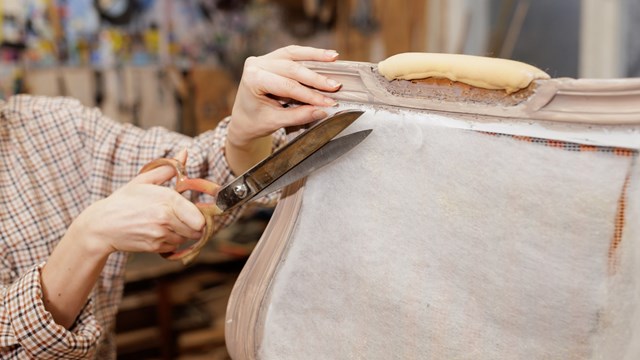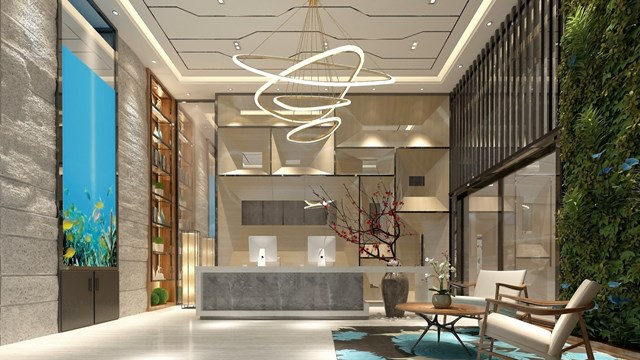When you lived alone, designing your space was easy. You went to the paint store, selected your favorite colors, came home and did the deed. But then you got married, and decorating got a little trickier. Every design decision had to get approved by another person—and sometimes opinions differed. Then perhaps you had children who sometimes acted like a mini-design committee unto themselves, and decided that pink and purple should be the colors of the playroom instead of your dreamy grey. This is where the real drama started, and unless you had great communication and a few rules, nothing would get done and no one would be happy with the final product.
The same thing happens—though on a larger scale—within a co-op or a condo community. When the boiler in a building needs to be replaced, it’s a fairly straightforward operation.
But when design and decorating decisions are being made in a co-op or condo building by a committee of people—each with different tastes and preferences, and widely varying levels of design expertise—it's a very different matter. Feelings come up (and get hurt), personal aesthetics get challenged, and tension can run high. Still, there are ways that the process of designing by committee can work—and ways that boards, managers and the design committee members can improve the quality of their interactions and help the whole process go more smoothly.
The Same...But Different
Ann Marie Del Monico, an interior designer and the owner of AM Interiors, and vice president of the board of her building in the Streeterville neighborhood in Chicago, was selected as one of two people to serve on the design committee when her condo building was planning on doing a massive hallway renovation project.
A design committee is similar to other committees within a co-op or a condo board in that it’s a small sub-group formed to tackle a specific project. The committee could be as small as two people or it could be larger if more people want to join—it really depends on the building (of course, if a building is truly tiny, with just four or five units, it wouldn’t make sense to have everyone serve on the design committee—or else there would be no point in creating the committee in the first place).
But beware there are advantages and disadvantages to designing by committee, according to Susan Lauren, CID, NCIDQ, IIDA, a licensed interior designer and the principal of Manhattan-based Lauren Interior Design, Inc.
“Group involvement is advantageous since it allows multiple voices of the building to be heard and decisions to be made bilaterally,” says Lauren. “At the end of the day, you want owners and shareholders to be happy with the new aesthetics. Therefore, designing by committee is more likely to guarantee that outcome.”
But she warns, the potential drawback of design committees is that there can be too many voices. “Ideally there should be three—with a maximum of five members. More than that leads to significant delays in the design process—due to scheduling conflicts and difficulty in gaining consensus.”
Lauren said she once worked with 12 committee members, which eventually dwindled down to four. “With that many people, meetings went very slowly, there were always interruptions, and it was hard to reach decisions, which is not fair to the client. I strongly discourage clients from forming large committees.”
Del Monico and another interior designer who lived in the Streeterville building seemed like the perfect pair to be on the committee, so the building gave them a budget and paired them up with a design firm, who would be working with them.
“The board decided it would be too much work for the design committee to make all the choices, and it also would be a question of ethics, so the design committee chose a design firm to work with, with the committee overseeing the firm’s work. We would work with them in terms of colors and choices of finishes,” Del Monico says.
The project involved choosing hallway wallpaper for about 50 floors, says Del Monico, and while the outside design firm would have the first choice in the selections, the design committee would oversee everything so it would go in the direction that they wanted. It all seemed like it was going to be perfectly executed without a hitch—but that's not how it unfolded.
“It was a big mess,” Del Monico says. “It didn’t work well because when we went for a vote, it was political with our board.” Instead of listening to the design committee recommendations, Del Monico says, the board chose to go in a completely different direction, disregarding everything that the hired design firm chose—and everything that the design committee said. “To this moment, nothing has been done,” she says, explaining that she felt the board's decisions became personal rather than objective.
Working Together
The ultimate goal of the committee, says Lauren, is to work together to improve and enhance the building’s image. “The goal of the design committee is to select a design that will best embody the building’s image and increase its marketability and property value,” she says. “The ideal committee member is a team player dedicated to achieving this goal. Sometimes this means they need to put what’s best for the building ahead of their own personal agenda. For example, if a committee member loves traditional design, they need to be open-minded and have the flexibility to support a modern one if that is what the building determines to be most appropriate,” Lauren says.
Lobby and hallway design is a specialized niche of hospitality design. “As a designer with expertise in this arena, I guide the committee through the design process and direct them towards a successful result,” explains Lauren. “Anyone who doesn’t work well in a group or is not willing to be flexible may be a hindrance,” she says.
Lauren says that she has learned from experience that even decorators living in the building or individuals with “great taste” are not necessarily good candidates for the committee if they are unwilling to be open-minded, and don’t work well in a team environment or take direction.
How to choose a final design? In order to avoid uncertainty in decision-making, (which happens often) both design committees and professional firms should offer their boards two or three options when it comes to the final plan so that the board always feels like they’re still in control, says Sherry Winchester Schultz, a Midwest sales professional and the president of the National Association of the Remodeling Industry (NARI) of Greater Chicagoland.
It’s important to have a committee chair, someone who will have a final say should there be split decisions, she says. That’s how the committee, designer and board can work together on the vote without stepping on each others' toes and holding the project back.”
The biggest issue that the designers and design committees come across is the mere fact that they’re trying to please a large group of people—and they’re dealing with opinions.
“The design process,” claims Lauren, “should be a give and take between the designer and design committee right from the start and throughout the course of the project. I always encourage committee members to share their ideas and vision for the project early on. This can be helpful since it shows the direction they want—and sometimes, more importantly—it shows the direction they don’t want. Assuming it is appropriate and realistic, it is my challenge to bring it to life even better and in a more creative way than they could have imagined. If they don’t come with ideas—or if their ideas somehow do not fit—it is my responsibility to guide them in a more advantageous direction and drive a successful outcome.”
The Chosen Ones
Like all other committees formed by a co-op or a condo board, the board should first ask everyone in the building if anyone is interested in serving on the design committee. Then they can take a vote to figure out which of the residents the building actually wants on the committee.
Lauren agrees. “As far as how to best form the committee, I always encourage the board to interview prospective members to see if they meet this criteria and have the time to attend the meetings. I recommend there be a cross section of the building’s residents on the committee—some board members and some not. Since no more than three to five should make up the design committee, a lottery may also be a good idea if a large number of vetted individuals volunteer.”
Once the board selects the design committee, it’s time to choose a professional interior design firm.
For this, they can do a bidding process or they can take recommendations from other condo boards who have worked with designers, they can research candidates via Angie’s List or through professional organizations to see if they are a good fit for the building’s needs, Schultz says.
“It’s not just about the bottom line,” she says. “You want a designer who listens to your needs and wants, and delivers. It’s about making sure that your expectations and their expectations are in-line.”
Just like any other interior design project, the design committee may have firm ideas about the way they want their lobby or hallways to look—and they can bring photos or Pinterest pictures to show to the firm. Or, they may have no idea of what they want, and they may need the design firm to come up with ideas and styles to start the conversation, Schultz says.
At the end of the day, however, if there’s a decision to be made, the design committee typically gets final say over the design firm, Lauren says.
“Ultimately, the final design should be a group effort between designer and committee,” says Lauren. “There should be a healthy dialogue from the onset so that the project unfolds and develops in a linear fashion with everyone’s enthusiastic input and approval every step of the way.”
Design Gone Wrong
After all, the clients will be the people living with those designs—literally. But the designer will be the person with their name attached to the project, so if the designer truly disagrees with the direction of the interior design, then he or she may have to remove themselves from the project.
The worst thing that can happen is that everything falls apart from everyone fighting or failing to truly cooperate, like what happened in Del Monico’s case. To this day, the building has nothing but conduit on the ceiling. “It’s this animal that grew out of control,” she says. While Del Monico got along really well with the other person in her design committee and the project had been budgeted properly, she says that it all came down to egos and politics. In her case, her board put in an annunciator system on the ceiling even though it wasn’t the design firm nor the design committee’s recommendation. “We recommended that they have the firm put it in the best place possible aesthetically, but they wanted to just hurry up and get it up, and they wanted to hire someone to do something about it later,” Del Monico says.
It didn’t make any sense aesthetically, she says, comparing it to renovating a kitchen but starting with putting in a sink in the middle of the room before figuring out the details. “You’ll be spending more money in the end by fixing something that’s broken. That’s the problem that we encountered—they were looking at it all too practically.”
Danielle Braff is a freelance writer and a frequent contributor to The Cooperator. Managing Editor Debra A. Estock contributed to this article.










Leave a Comment